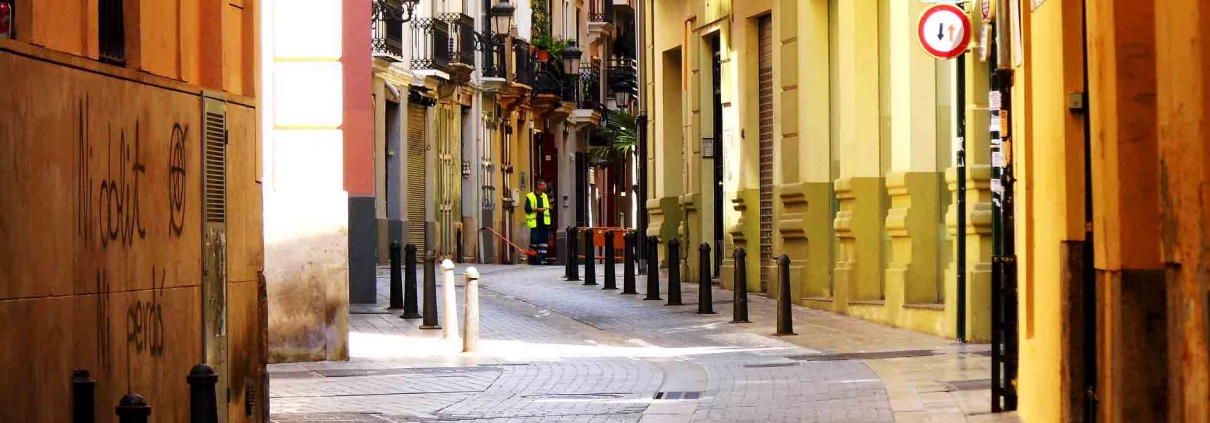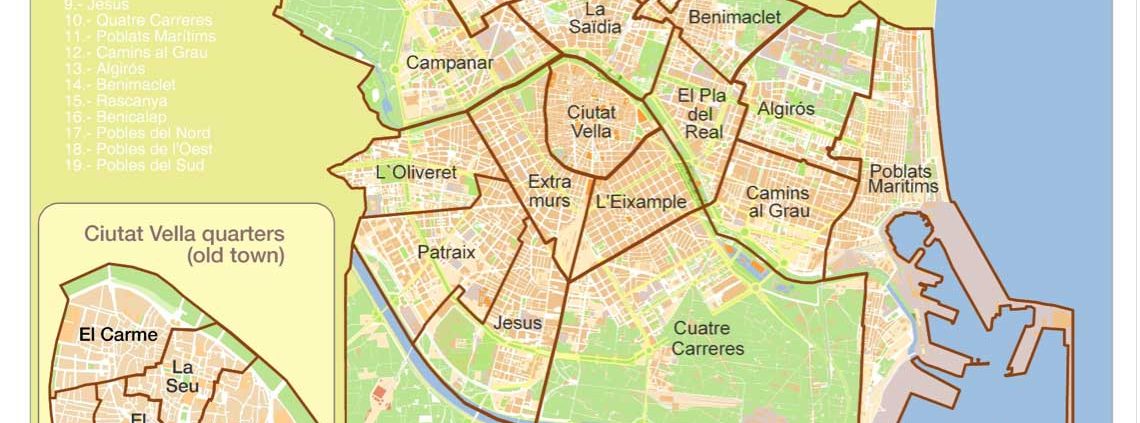Guide to private and international schools in Valencia
Valencia has a huge variety of private schools, from those that teach in (mostly) Spanish following the Spanish curriculum to those that provide foreign qualifications and teach in foreign languages exclusively, and those that have their own mix of languages and curriculums.
The atmosphere is also quite different in all of them. Some schools are very academic-minded and push their students to get the best possible grades to access the top universities worldwide, while others take a more relaxed ‘whole-person’ approach.
Choosing a school is never easy, and choosing a private school can be even harder. Always make sure you visit the school and understand what is expected from students and families, and in return what you can expect from the school. Take your time to review the curriculum, the education statement and, if available, the syllabuses. Most schools require an interview or a visit to the school during the admission process, make sure you ask as many questions as possible. Schools are used to this and won’t think negatively of an inquisitive parent.
One key aspect to take into account with private schools is cost. Most schools have a basic academic cost and extras that may or may not be optional. One of the distinguishing marks of a Spanish private school is the uniform, and parents are expected to buy it. Some schools will go as far as sending a child back home if the regulation uniform is not being worn. Most schools sell their uniforms on-site or on their website, and some have distributors or selected local stores where they can be found. There are also trips, special events and endless fundraisers, plus transport or boarding if you don’t live locally. Prices can usually be found on each of the schools’ websites, or requested from the school office.
This is a list of the most popular private schools within Valencia and surrounding areas.
British School of Valencia
Located in the heart of Valencia on Peris y Valero, right next to the Jesus metro station.
This school combines the Spanish and British national curriculums and awards its students with completion certificates from both countries (ESO/GCSE, Bachiller/A levels). This allows students to continue
studying in either country with ease. Students are taught in English and Spanish, as well as the local Valencian language. French, German and Chinese are taught as foreign languages. Students who finish their studies are awarded a C2 level in English, C1 in Valencian and a B2 in French, German and Chinese.
Applications for admission will only be considered after a booked meeting, and acceptance of requested documentation. Students joining after age 5 should pass an English language and mathematics assessment as well as provide previous school results (including SATs if coming from a British school).
American School of Valencia
Web: www.asvalencia.org
Located in Los Monasterios, a small residential area near Puzol, some 30 km from the centre of Valencia.
The main goal of the school is to educate open-minded free-thinkers who are not afraid of taking risks. Their curriculum is a combination of the American Common Core, the Spanish national curriculum and the International Baccalaureate (IB) curriculum. On completion of secondary school students could leave with 1, 2 or even 3 recognised certificates: the Spanish Bachiller certificate for all students, the IB certificate (if they chose to study it) and the American High School certificate (if they qualify). Students can also take part in year-long exchanges to American schools.
Admission applications are accepted year-round. If a student is starting after first grade, the educational record of the previous 3 three years is required with standardized testing results. The school also tests prospective students on academic subjects. Acceptance of students is entirely at the discretion of the school. An accepted student could be placed on a waiting list.
Caxton College in Puzol
Located in Puzol, about 20 km from central Valencia and offers a bus service for students who live in Valencia and Castellon.
Caxton College is a homestay boarding and day private school that follows the British national curriculum, with the added mandatory Spanish and Valencian language courses. It is an ‘outstanding’ British
Overseas School and approximately 1/5 of their students are of international origin. Students can take part in short exchanges with British schools and participate in a very large number of extra-curricular activities. For those who want to get a taste of the school before enrolling, taking part in their summer camps is a possibility.
In order to apply for a place at the school, you will need to first request an admissions form. The school requires academic records of 2 years and internal testing. The school encourages students to apply one academic year before their intended start date. Accepted students could be placed on a waiting list.
El Plantio International School
Web: http://plantiointernational.com/en/
Located in La Canada, a short walk away from La Vallesa metro station, just outside of central Valencia.
The school offers the British national curriculum, as well as the International Baccalaureate (IB) curriculum. The IB is mandatory for all students. Unlike most international schools who focus on academics or the sciences, the secondary school section of El Plantio is specialised in speech and drama. Drama is in fact a very important part of the curricula for the younger ages as well. English is the main language of instruction with Spanish and Valencian as main subjects, and French or German as foreign languages. Chinese is also offered as an extra-curricular. The school is open during summer to students and non-students.
For admissions you need to contact the school directly, and they will explain the requirements for each student.
Iale-Elians
Web: https://iale-elians.com/en/
Located in Valencia, Castellón and Alicante. The Valencia campus is in L’Eliana, just a few minutes from Torre del Virrei metro station.
Iale-Eliana es a group of 3 schools: Iale International School in Valencia, British School La Nucia in Alicante and British School Castellon in Castellon. They are all English-Spanish bilingual schools that follow the Spanish national curriculum. They also offer the government-mandated Spanish and Valencian, as well as French, German and Mandarin as foreign languages. During nursery the amount of English is about 70%, and slowly decreases to 33% in secondary. The school in Valencia is
specialised in music and can offer a recognised qualification. It also has a post-secondary technical school specialised in sports, and offers a summer camp in Dublin.
Admissions are year-round and follow 5 steps: appointment booking, school visit, admissions form, academic assessment, and submission of required documentation. Students who don’t speak Spanish will be required to take part in a special class.
Cambridge House Community College
Located in Rocafort, less than 10 kilometres West of Valencia. The school offers a bus service (that includes after school clubs) that covers most of the city of Valencia and some surrounding areas.
Cambridge House is a British School Overseas. Don’t be tricked by the name into thinking the school is connected to the famous university, they are completely unrelated. As with most other private schools, almost all classes are conducted in English. However, communications with home are in both English and Spanish. Unlike other schools, the foreign languages taught are French and Italian, as well as the mandatory Spanish and Valencian.
For admissions parents need to book an appointment and visit the centre. Students who start during the primary or secondary years need to provide academic records and spend one or two days in a classroom as part of their assessment.
Colegio Mas Camarena
Web: www.colegiomascamarena.es
Located approximately 10 km West of Valencia between Rocafort and Torre En Conill. The school offers a bus service.
Mas Camarena is one of the best ranked private schools in the country, and regularly boasts the highest Selectividad scores in the Community of Valencia. This school stands out because it follows the Spanish national curriculum but about 50% of the teaching is done in English (more in the early years and less secondary). French, German or Mandarin can be chosen as a foreign language from the age of 10. In secondary school students can choose to either study the Spanish curriculum or to opt for the International Baccalaureate. The school has
a large sports complex, a language school and an official music school. It also provides full boarding with families if required.
The admissions process follows 3 steps: online form, school visit and in-person interview. Unlike other private schools, it offers a price reduction to large families.
English School Los Olivos
Web: http://www.los-olivos.es/en/
Located in Campolivar, approximately 9 kilometres from central Valencia, and offers a bus service for students.
Los Olivos mostly follows the British national curriculum and students sit for GCSE, AS and A-level exams, while still respecting the Spanish national curriculum enough to be awarded with ESO and Bachiller certificates. Most classes are taught in English, except for Spanish and Valencian. The school offers the typical British school experience with summer fairs, sports days, and summer concerts; but also embraces local culture and events such as fallas.
Los Olivos is quite small in size compared to other private schools, so nursery admission should be submitted two years before the intended start date. For admissions to other school years, the school should be contacted directly.
Julio Verne School
Located in Torrent, to the Southeast of Valencia right next to the A7 motorway.
Julio Verne is a bilingual English-Spanish school that follows the Spanish national curriculum enriched with British subjects to allow students to sit for IGCSE and A-levels if they wish to. French is taught as a foreign language in primary and secondary, and German is an optional subject. Students can choose to focus on sciences or humanities for their secondary level studies. Students can also chose to sit for Cambridge English exams with the school, as they are a recognised preparation centre. The school follows an innovative methodology and takes part in a variety of national and international projects. Julio Verne stands out in that it offers scholarships to students from families with a lower income for Bachiller, dependant on academic performance.
For admissions the school should be contacted directly. To apply for a scholarship, it has be done while the student is on 4th of ESO using a special form available on the schools website.
Colegio Internacional Levante
Web: http://www.colintlev.net/en
Located on the border of Chiva and Valencia, very near the AP7 motorway. The school offers buses to Valencia and surrounding areas.
Colegio Internacional Levante is a Spanish-English bilingual school, with about 50% of the classes taught in English. The school follows the Spanish national curriculum, with the International Baccalaureate for secondary school students. The school has a recognised music academy on site, as well as a mini zoo and they are part of the Apple Distinguished Educator network and uses Macs and iPads within the classroom setting. Students experience a typical Spanish school life, with events such as Semana Blanca, a long-week skiing trip.
For admissions families should fill in a form available on the school’s website.
Lycée Français de Valence
Web : https://www.lfval.net/es/
Located in Paterna, on the border with Campolivar. The parents’ association runs a bus service for students.
The Lycée is a fully French school in Spanish territory, recognised by the French government. It follows the French national curriculum, the language of instruction is French and the content is based on French culture and history. Spanish language and culture are only studied in relation to French events. When finishing secondary school, students receive the Baccalauréat certificate. Those who wish to continue their education in Spain can apply for a university that accepts international qualifications or request an homologation to the Spanish Bachiller and take part in the Selectividad exams. The school has an active and hands-on parents’ association that regularly organises extra activities and trips.
The admissions process follows a very strict timetable that all prospective students are expected to respect. Only French families who had to move during the school year will be considered for in-year admission. French families can apply for scholarships.
Deutsche Schule Valencia
Web: http://dsvalencia.org/de/home-university/
Located in Benimaclet, a short walking distance of the Facultats metro station.
The Deutsche Schule, or Escuela Alemana as it’s commonly referred to, is a German school that combines the German and Spanish national curriculums with and emphasis on the German one. Classes are taught in both languages, as well as the local Valencian, with English and French as foreign languages. Students can take part in exchange programs with France and Germany. The school has a music and a sports association that teaches students, connects with parents and alumni, and promotes access to musical and sporting events throughout the Valencian Community. The lunch menu is Mediterranean-based with an emphasis on local products.
For admissions the school should be contacted directly. The school offers occasional scholarships, under the complete discretion of the scholarship commission.
Mammolina Montessori International School
Web: https://mammolinamontessori.com/
Located in Paterna with excellent transport links into the city.
Mammolina Montessori International School is authorized by the Generalitat Valenciana (GVA) Department of Education for early childhood and primary school education and we are a NEASC School candidate. Located in a quiet neighborhood, just north of Valencia, they offer a multilingual (English-French-Spanish) Montessori based education.
As a small, private, family-oriented international school, children benefit from a diverse student body, an enriching multilingual environment, an individualized education and a beautiful outdoor space for them to explore nature, play, and engage in sports.
The children are offered afternoon sessions of yoga and many classes are taught outdoor. An organic, freshly prepared vegetarian meal is available for those children who wish to sign up for the hot lunch option. The school is surrounded by a large green space with gardens and trees.
For admissions the school should be contacted directly and an application form will be sent to be filled out
Credits: Photo by Kaboompics .com from Pexels





